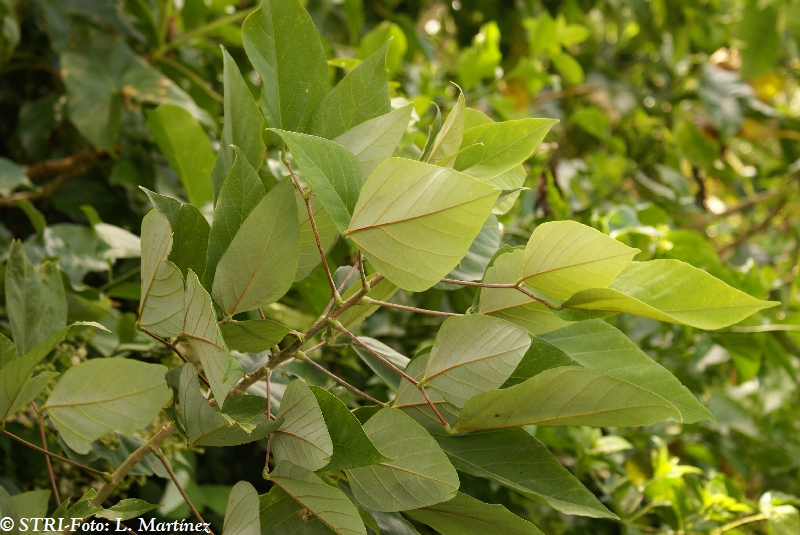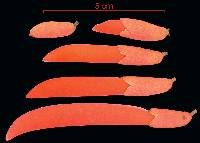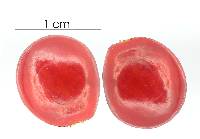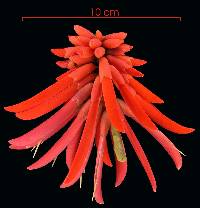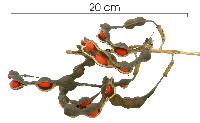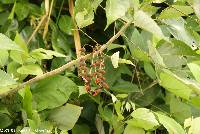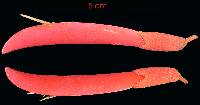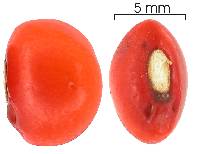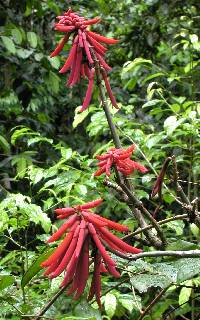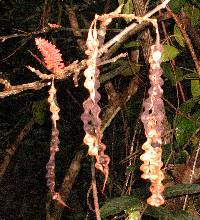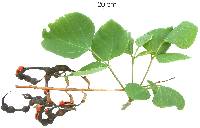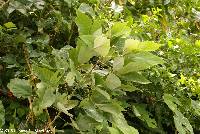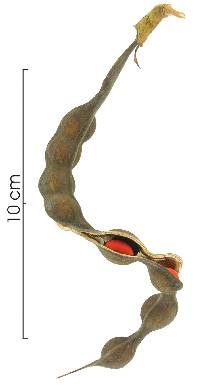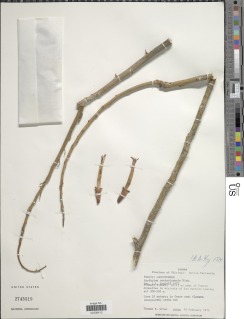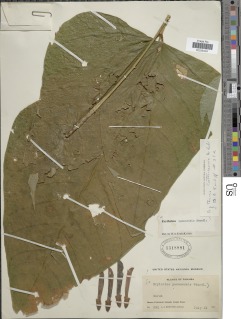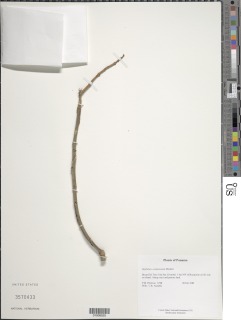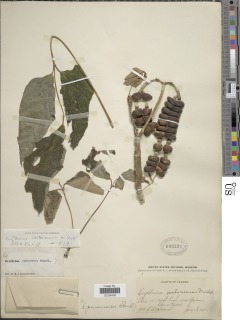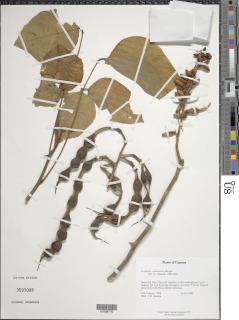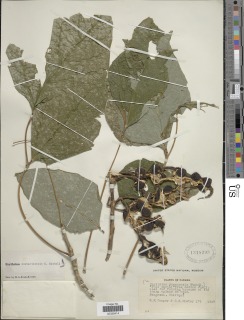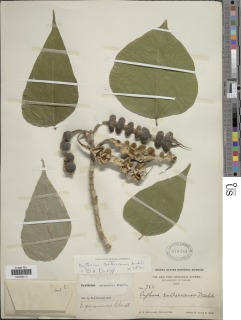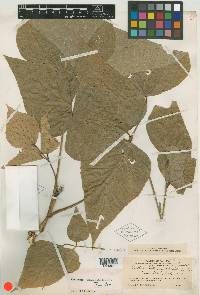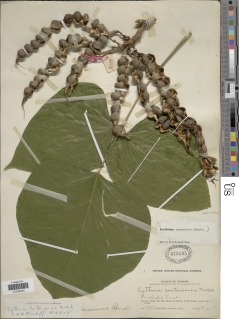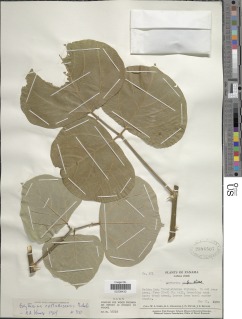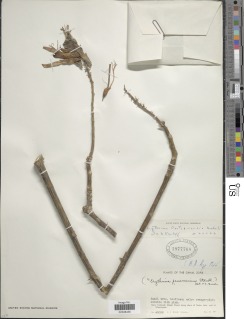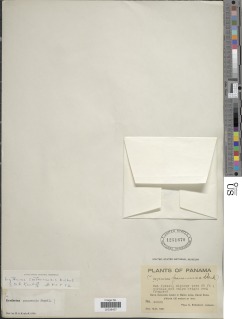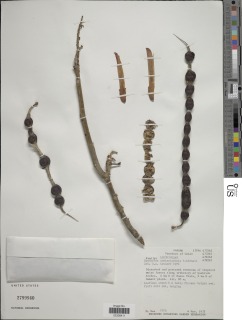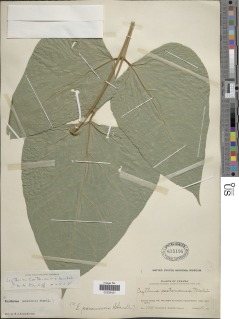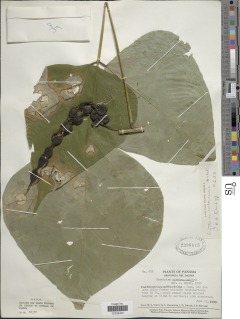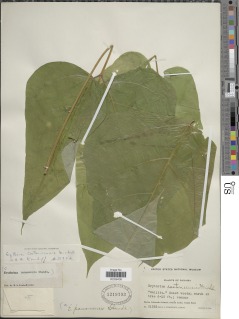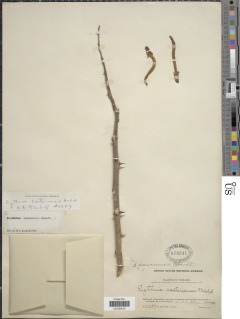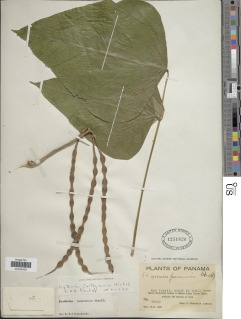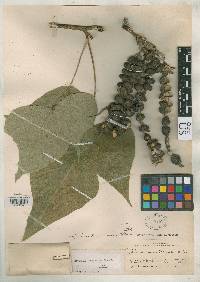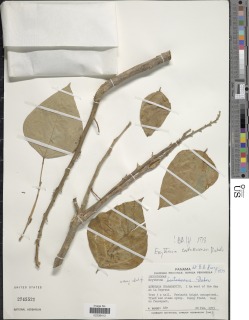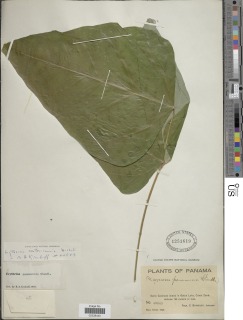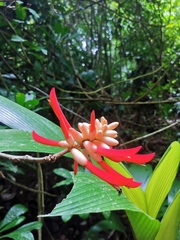

|
|
|
|
Family: Fabaceae
palo santo, more...Pito
[Erythrina costaricensis var. panamensis (Standl.)Croat, moreErythrina panamensis Standl.] |
Descripción: Árbol de 3 a 7 m de alto. Tronco y ramas armados con espinas. Corteza exterior blanca o gris. Ramitas terminales verdes y con espinas en forma de aguijón. Hojas trifolioladas y alternas, con el folíolo terminal grande y los otros dos más pequeños, verdes en el haz y verde pálidos por el envés. Folíolos de 5-28 x 3-18 cm, ovados a oblongos, con ápice acuminado, bordes enteros y base redondeada. Pecíolo de 15-35 cm de largo y pulvinado en la base. Flores tubulares rojas. Frutos en legumbres, de 15-25 cm de largo y con constricciones entre las semillas, verdes, tornándose rojos o negros y dehiscentes al madurar. Semillas con sarcotesta roja. Datos Ecológicos: La especie crece a bajas o medianas elevaciones, en bosques húmedos, muy húmedos o nubosos. En Panamá se encuentra en las provincias de Bocas del Toro, Chiriquí, Coclé, Colón, Darién, Panamá y la comarca de Guna Yala. Ocurre en pendientes, hondonadas y márgenes de riachuelos dentro del bosque. Deja caer sus hojas durante la época de floración. Florece y fructifica de noviembre a diciembre. Las flores son visitadas por colibríes. Especies Parecidas: A menudo se confunde con LK ery1fu Erythrina fusca LK2 , pero E. fusca es un árbol de mayor tamaño que tiene flores anaranjadas y crece en áreas abiertas. Usos: La madera es empleada para postes de cercas. Shrub or small tree, usually 3-7 m tall; trunk and branches armed with short, stout, corky prickles; branches few, stout. Leaves trifoliolate; stipules linear-lanceolate, ca 1 cm long, caducous; petioles 17-34 cm long, often with prickles; petiolules 6-12 mm long, articulate at base; leaflets broadly ovate, acuminate, rounded or truncate at base, thin, +/- glabrous above, closely matted with long appressed trichomes below, the terminal leaflet to 28 cm long and 19 cm broad, the lateral leaflets somewhat smaller, inequilateral at base. Racemes congested at ends of leafless branches, soon falling; pedicels 2-3 mm long; flowers red; calyx bilobed, ca 2.5 cm long; standard to 9 cm long, ca 1 cm wide, conduplicate, shaped like the blade of a machete; other petals much reduced, shorter than calyx; stamens 10, 9 united more than halfway; anthers held at 5 levels in a 1-2-4-2-1 arrangement, the lowermost being on the free filament; style densely pubescent except near apex, at first shorter than most anthers, longer than anthers by the time the flower falls. Legumes reddish, densely pubescent, 15-25 cm long, long-pointed at apex, deeply constricted between seeds with the isthmus 2-20 mm long, splitting open and twisting slightly at maturity to expose seeds; seeds several, bright red, ca 8 mm long. Croat 6560, 12710. Common in the forest, especially the old forest. Flowers appear before the leaves from September to December (especially in September and October), rarely later. The fruits mature mostly during November and December and have usually shed all their seeds by March. The leaves fall around September, growing out again during the early dry season. The banner of the flower is weakly sealed along its outer margins. When the flower first opens, the style is held below all but the lowermost anther. At this time even the shorter anthers are shedding pollen. The stigmatic surface of the style is somewhat cupular and is filled with a jellylike plug that collects much pollen. The anthers continue shedding pollen until the style has grown beyond the longest stamen. At this time, when the flower falls, the stigma is flattened, without the jellylike substance. It has been presumed that hummingbirds pollinate the plant, but it is difficult to see how the plant prevents self-pollination-possibly the jellylike substance prevents self-pollination. Although Krukoff (1939) originally distinguished both E. costaricensis and E. panamensis Standl., he has in recent years clumped them. Though admitting extreme variability in the taxa, I feel that many of the Panamanian materials of this species, including BCI plants, are at least subspecifically distinct. The BCI plants have larger, thinner leaves and fruits that are usually so constricted between the seeds that the seed-filled segments are broader than long and scarcely more than 1 cm apart. Flowers are bright red and appear while the plant is leafless; Costa Rican specimens are often reported as orange-flowered and flower when the plant has leaves. They also have smaller, thicker leaves and fruits that are not nearly so constricted between the seeds, so that the seed-filled segments are usually as long as to much longer than broad. Costa Rican plants are often reported to be large trees, whereas the BCI plants are never more than 7 m tall. Panama to Colombia. In Panama, known from tropical moist forest in the Canal Zone, Bocas del Toro, Chiriqui, Panama, and Darién. from tropical wet forest in Colon, Coclé, and Darién. and from premontane rain forest in Darién. See Figs. 285 and 286. Bocas Species Database Distribution: Isla Colón Characteristics: Roadside weed Arbol de 6 m. Hojas discolor, envez verde blancuzco con vellosidad, fruto con semillas anaranjado puro. Tree 6 m. Discolor leaves, whitish green envez with hair, pure orange fruit with seeds. |
|
|
|

